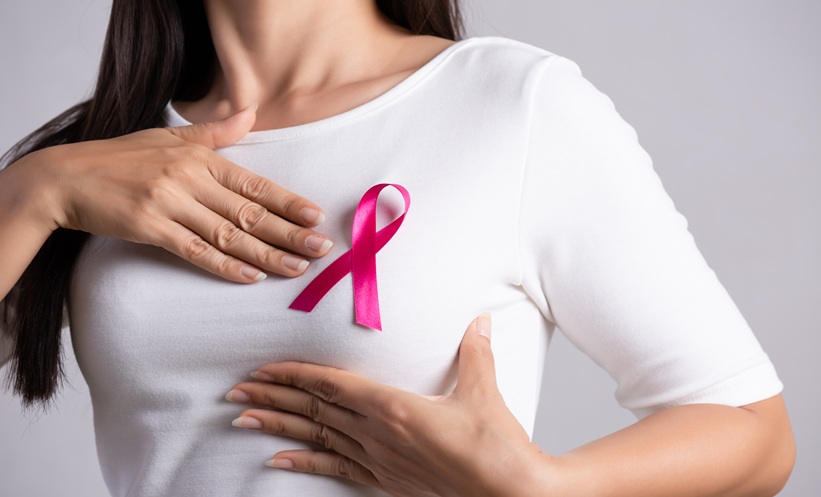Author: Evgenia Koutsouki, EMJ, London, UK
Citation: EMJ Repro Health. 2023;9[1]:23-26. DOI/10.33590/emjreprohealth/10305594. https://doi.org/10.33590/emjreprohealth/10305594.
![]()
METHODOLOGY AND DEFINITION
Romualdi began by stating that putting the guidelines together included gathering evidence of efficacy and evidence of safety, with a literature search up to October 2022; and then further assessing the quality of papers, and formulating the recommendation based on the opinion of the experts, as well as the patient perspective.
Romualdi explained that UI is defined by ESHRE as infertility in couples with adequate coital frequency (at least 12 months of regular unprotected intercourse), where the female partner is aged 40 years or below, and has an apparently normal ovarian function, fallopian tubes, uterus cervix, and pelvis; and the male partner has apparently normal testicular function, genitourinary anatomy, and ejaculate. Inaccuracy of the diagnosis of UI rises sharply at 40 years of age, and there is an 80% chance of false diagnosis of UI at this age, meaning females could be subjected to inappropriate treatments.
RECOMMENDATIONS
The Guideline Development Group (GDG) recommends routinely taking a thorough medical reproductive and sexual history from both partners in couples with UI. This should be followed by confirming ovulation, which is not recommended in females with regular menstrual cycles.
If, however, in this group of females, confirmation of ovulation is warranted, the recommended tests are urinary luteinising hormone measurement, ultrasound monitoring, or mid-luteal progesterone measurement. Given the lack of biomarker for oocyte and corpus luteum quality, routinely measuring mid-luteal serum progesterone levels is not recommended. There is a strong recommendation against endometrial biopsy for histological examination in the absence of other indications.
In females with regular menstrual cycles, ovarian reserve testing is not required to identify the aetiology of infertility, or to predict the probability of spontaneous conceptions over 6–12 months. A strong recommendation is, however, using hysteron contrast sonography, hystero-foam sonography, or hysterosalpingography for testing tubal patency compared to laparoscopy and chromopertubation.
Chlamydia antibody testing could be considered for tubal patency, as it is a non-invasive method to differentiate between patients at low- and high-risk for tubal pathology. Tubal flushing with oil-soluble contrast medium is preferable over water-soluble contrast medium, but the risks of the former should be discussed with couples. In patients at high risk for tubal abnormality, visual demonstration of tubal patency is necessary.
Routine diagnostic laparoscopy is not recommended for the diagnosis of UI. Laparoscopy should be reserved for females with an abnormal hysterosalpingography, or those at risk of tubo-peritoneal disease due to history of pelvic inflammatory disease, previous ectopic pregnancy, or clinically suspected or known endometriosis. A 3D ultrasound is recommended for excluding uterine anomalies in females with UI. However, no additional diagnostic procedures should be performed to confirm an anatomically normal uterine cavity.
There is a strong recommendation against postcoital test, as this is subjective, poorly reproducible, inconvenient to the patients, and can even change clinical management, but does not change the ability to conceive in couples with UI. Vaginal microbiota testing could be considered in these couples only for research purposes.
The GDG recommends at least one basic semen examination, performed by a laboratory that subscribes to an external quality control programme. If this result is below the lower fifth percentile reference limit according to the World Health Organization (WHO) criteria, a second analysis should be performed after a 3-month interval. Additional diagnostic procedures to confirm normal genitourinary anatomy in males before being diagnosed with UI are not recommended. There is also no added value of additional tests in males with normal WHO semen analysis for anti-sperm antibodies, sperm DNA fragmentation, chromatin condensation, aneuploidy screening, hormonal testing, human papillomavirus testing, and microbiology testing.
Testing for anti-sperm antibodies in couples with UI is not recommended, whereas testing for coeliac disease in females with UI can be considered. Testing for thyroid antibodies and other autoimmune conditions in females is not recommended. Even though thyroid-stimulating hormone measurement is considered good practice in preconception care, no additional thyroid evaluation is recommended if thyroid-stimulating hormone is within the normal range. Finally, testing for thrombophilia, oxidative stress, vitamin D deficiency, prolactin, and performing genetic/genomic tests, are not recommended in females with UI. Measurement of oxidative stress in semen of males in UI should only be considered in the context of research, and BMI evaluation is considered good practice in pre-conception care.
Romualdi summarised the main points, emphasising that, on the female side, menstrual history is enough to confirm regular ovulation, 3D ultrasound is enough to confirm normal uterine cavity structure, and that patency of the tubes can be verified by hysterosalpingo contrast sonography, hysterosalpingography, and chlamydia antibody test. For the male, a normal semen analysis based on WHO criteria may be sufficient to make diagnosis of UI.
MANAGEMENT OF UNEXPLAINED INFERTILITY
Bhattacharya spoke about the guidelines, highlighting the lack of high-quality evidence on many aspects of UI management. In a couple with UI and good prognosis, there is a period of expectant management, during which the couple try to conceive on their own. In couples with poor prognosis, the next step is ovarian stimulation (OS), and after three–six cycles of this, in vitro fertilisation (IVF). This pathway is also undertaken in couples who follow expectant management for more than 6 months, where this does not result in pregnancy. Bhattacharya highlighted that the decision to move straight to IVF without OS first can be made under exceptional circumstances.
EXPECTANT MANAGEMENT
Bhattacharya emphasised the importance of the decision of when to introduce active treatment after expectant management. Intrauterine insemination (IUI) with OS is the first-line active treatment recommended for couples with UI. The GDG advises that the decision of introducing active treatment should be based on the prognosis of couples. Bhattacharya highlighted that UI is not sterility, which is something that the couples would need to be reminded of, and that the chance of conception changes over time and is not static, as shown by studies done in couples with UI.
Two things to be considered when transitioning from an expectant approach to an active approach are the chances of a live birth with expectant management, and the additional benefit treatment provides. The treatment benefit can be estimated by subtracting the chance of live birth through expectant management from that of treatment, both of which are based on prognostic factors for each couple. Dynamic models have recently been developed in order to recalculate the new chance of conception over the next 12 months for couples who have previously been given such an estimate.
EXPECTANT MANAGEMENT VERSUS ACTIVE TREATMENT
Clomiphene use in couples with UI shows no benefit in live birth outcomes, and IUI without OS versus expectant management does not conclusively show a benefit. The outcomes of IUI with ovarian stimulation versus expectant management seem to vary based on the initial prognosis of the couple. Studies have shown that the same treatment can be effective in a group with a certain prognosis, but not in another.
Treatment in naïve females given either IVF or stimulated IUI showed no difference in outcomes. In a group of females previously treated with IUI, IVF showed obvious superiority, demonstrating again that the same treatment has different effects in different prognostic groups of patients with UI. A more recent trial showed no difference between three cycles of IUI and OS versus one cycle of IVF. Cumulative incidence of pregnancy leading to live birth is doubly in favour of IVF versus OS with IUI. Finally, comparing IVF with expectant management is still inconclusive due to small sample sizes; however, the odds ratio is 2.56 in favour of IVF.
ALTERNATIVE THERAPEUTIC APPROACHES
Conditional guidance says that adjunct oral antioxidant therapy for females and males undergoing fertility treatment is probably not recommended for either. The same applies to acupuncture in females, and nutraceuticals such as inositol supplementation. Psychotherapy is recommended for patients when needed, as are diet, exercise, and behavioural therapy.
NEEDS FOR FUTURE RESEARCH
According to Bhattacharya, three main questions need to be answered by future research:
- Can a predictive model be developed, tested, and validated to compare the outcomes of different management strategies of couples with UI?
- What is the optimal assistive reproductive technology for UI?
- What is the value of performing current methods to assess sperm DNA integrity, and to predict clinical outcomes in couples with UI?
In their concluding remarks, Bhattacharya highlighted that couples with UI have a real chance of natural pregnancy, and for this reason, a prognosis-based approach to active treatment that works out the net benefit of a proposed treatment in each couple is needed. OS and IUI remain the first line of active management, whereas IVF (not intracytoplasmic sperm injection) remains the final port of call. Finally, Bhattacharya explained that an individualised approach should be adopted, which takes female age and duration into account.







